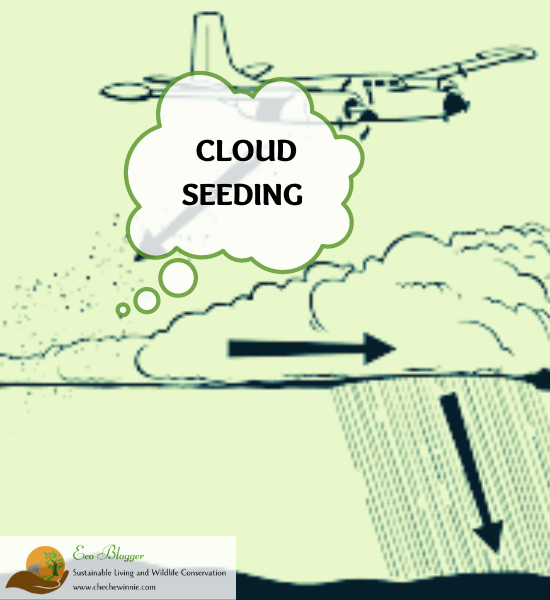Enhancing Precipitation to Alleviate Water Scarcity
Are you tired of unpredictable weather ruining your plans and affecting your daily life? Have you ever heard of cloud seeding? If not, you might be interested to learn about this fascinating technology that has been used for decades to control precipitation, particularly in areas where water is scarce or where weather patterns are not favourable.
What is Cloud Seeding and How Does it Work?
Cloud seeding is a process of adding certain materials to clouds to encourage rainfall or snowfall. The process involves spraying fine particles, such as silver iodide, potassium iodide, or dry ice, into the atmosphere using aeroplanes or ground-based generators. These particles then act as nuclei around which water droplets can form, leading to increased rainfall or snowfall.
While cloud seeding is not a new concept, it has gained a lot of attention in recent years, especially with the growing concerns of climate change and water scarcity. In fact, cloud seeding has been proven effective in many regions around the world, such as the Middle East, China, and the western United States. In some areas, cloud seeding has been able to increase rainfall by up to 20%.
The Effectiveness of Cloud Seeding
Cloud seeding has become an increasingly important tool in the fight against droughts and water shortages. It is especially useful in areas that receive low rainfall, and it has been used to great effect in arid regions such as California and the Middle East. By enhancing rainfall, cloud seeding can help to alleviate droughts and water shortages in areas that are heavily dependent on agriculture.
In addition to its use in water resource management, cloud seeding has also expanded to other areas such as snow sports, where it is used to increase snowfall in ski resorts. By enhancing snowfall, cloud seeding can help to prolong the skiing season and boost tourism in snow-prone regions.
Controversies Surrounding Cloud Seeding
Despite its effectiveness, cloud seeding remains a controversial topic, with some people questioning its safety and effectiveness. Some argue that the chemicals used in cloud seeding may have adverse effects on the environment, while others claim that the process is expensive and ineffective.
However, proponents of cloud seeding point out that the process has been shown to increase rainfall by up to 20%, and it can help to alleviate droughts and water shortages in areas that are heavily dependent on agriculture.
Here are the Pros and Cons of Cloud Seeding
Pros:
- Increased precipitation: Cloud seeding can lead to increased rainfall or snowfall, making it a useful tool in areas affected by drought or water scarcity.
- Water resource management: Cloud seeding can help to manage water resources, especially in areas that depend heavily on agriculture.
- Prolonged skiing season: Cloud seeding can enhance snowfall, making it useful in snow sports and boosting tourism in snow-prone regions.
Cons:
- Environmental concerns: The chemicals used in cloud seeding may have adverse effects on the environment if not regulated properly. The effects of cloud seeding on the environment are not fully understood, and there is a risk of unintended consequences.
- Effectiveness is uncertain: The effectiveness of cloud seeding varies from region to region, and it may not work in all areas. Some studies have shown that cloud seeding has no effect on rainfall in some regions.
- Expensive: Cloud seeding can be expensive, and it may not be cost-effective in some areas. The cost of cloud seeding includes the cost of the seeding materials, aircraft or generators, and trained personnel to carry out the process.
It is essential to note that cloud seeding is still a subject of research and debate, and there is ongoing research to better understand its effects on the environment and its effectiveness in managing water resources.
Countries practising Cloud Seeding
Cloud seeding is practised in several countries around the world, particularly in areas affected by drought or water scarcity. Some of the countries that have used cloud seeding include:
- United States: Cloud seeding has been used in several states in the US, including California, Texas, and Colorado, to enhance precipitation and manage water resources.
- China: China is one of the largest users of cloud seeding technology, and it has been used extensively to increase rainfall in regions affected by water scarcity.
- United Arab Emirates (UAE): UAE has also used cloud seeding to increase rainfall in the region. The country has invested heavily in cloud seeding technology to address water scarcity.
- Australia: Cloud seeding has been used in Australia to manage water resources and alleviate drought conditions in some regions.
- Russia: Cloud seeding has been used in Russia to increase snowfall in winter sports areas and manage water resources in some regions.
- Israel: Cloud seeding has been used in Israel to manage water resources and alleviate drought conditions in some regions.
- Thailand: Cloud seeding has been used in Thailand to increase rainfall in areas affected by drought and water scarcity.
These are just a few examples of countries that have used cloud-seeding technology. Cloud seeding is becoming an increasingly popular method for managing water resources in regions affected by drought and water scarcity, and it is likely to be used more widely in the future.
In conclusion, cloud seeding is a fascinating technology that has the potential to address water scarcity and improve the lives of millions of people around the world. While there are still concerns and debates around the practice, it is clear that cloud seeding has the potential to make a significant impact on our planet’s water resources.

